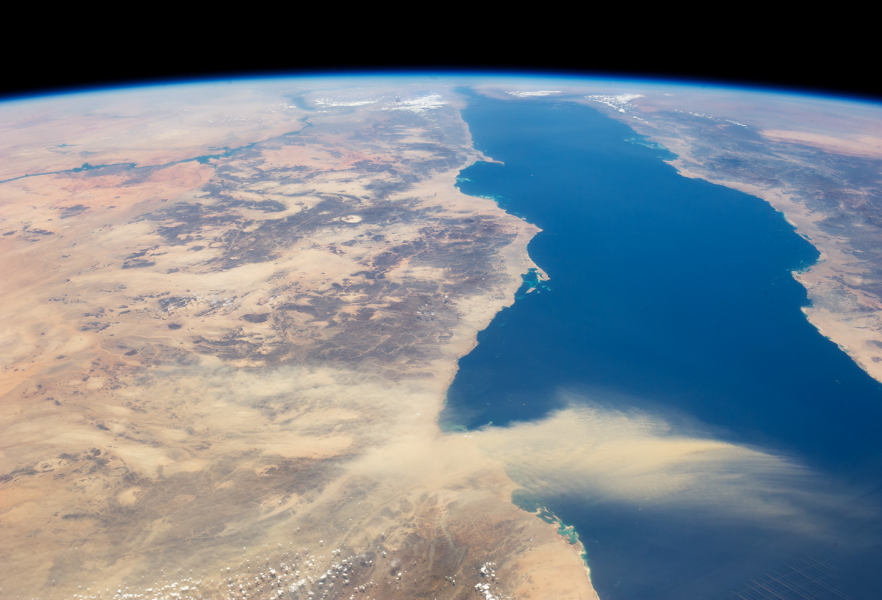When we think about the cutting edge of exploration, most minds drift toward the stars. Space travel, lunar missions, and Mars rovers dominate headlines. But some of the greatest scientific breakthroughs are happening in the opposite direction—beneath the ocean's surface. Surprisingly, ocean science and space tech share more than a passing resemblance. The technologies, challenges, and missions of these two fields are deeply connected.
Let’s dive into the fascinating overlap between deep-sea exploration and space exploration and explore why collaboration between them is shaping the future of innovation.
The Common Ground Between the Ocean and Space
At first glance, the ocean floor and outer space seem like completely different realms. One is wet, dark, and full of life; the other is a vacuum of silence. But when it comes to scientific exploration, both environments present similar conditions and obstacles.

Shared Risks:
- Extreme environments: Deep Sea and space are both harsh, pressure-heavy (or pressure-less), and dangerous to humans.
- Remote operations: Both require robotic vehicles or autonomous systems for exploration and data collection.
- Limited human presence: Just like astronauts in orbit, marine scientists rely on remotely operated vehicles (ROVs) and sensors to collect samples and images.
- High cost and complexity: Launching a satellite and sending a submarine to the ocean floor both involve massive planning, funding, and precision.
This shared ground has led scientists to adapt ocean research for space tech—and vice versa.
From Submarines to Spacecraft: The Space Tech Connection
Many innovations used in space tech were first developed for the ocean. Similarly, space tech is now being repurposed to help scientists better understand our own planet’s oceans.
How Ocean Tools Inspire Space Tech:

1. Autonomous Vehicles
Ocean researchers use Autonomous Underwater Vehicles (AUVs) to navigate uncharted territory, much like space rovers on Mars or the Moon. NASA has even tested robotic systems in Earth's oceans as part of simulations for extraterrestrial exploration on icy moons like Europa.
2. Satellite Mapping
Technologies that allow us to map space from orbit are now being used to map the ocean floor. NASA and CNES’s SWOT satellite is a leading example, offering high-resolution imaging of surface water and ocean topography.
3. Sensor Technology
From temperature and pressure sensors in submersibles to spectrometers aboard satellites, data-collecting tools are essential in both domains. These devices help monitor climate change, detect underwater activity, and guide exploration missions.
Scientific Missions That Bridge Ocean and Space

Some of the world’s top space agencies and institutions are now actively investing in ocean science as part of their broader space research strategies. This is especially true for organizations like NASA, NOAA, ESA, and research centers like MIT.
Notable Initiatives:
NASA’s PACE Mission
The Plankton, Aerosol, Cloud, Ocean Ecosystem (PACE) satellite, launched in 2024, is monitoring ocean health by tracking phytoplankton and other oceanic elements. The data helps scientists understand global carbon cycles and climate dynamics.
Ocean Worlds Exploration Program
This program focuses on preparing for missions to ocean-bearing moons like Europa, Enceladus, and Titan. Researchers use Earth’s oceans to test robotic systems that may someday explore liquid environments on distant planets.
MIT’s Ocean-Orbit Seminars
Educational institutions like MIT host cross-disciplinary seminars like “From Ocean to Orbit”, exploring how deep-sea robotics informs space engineering and vice versa.
Informing the Future of Space Travel
What does deep-sea research have to do with the future of space travel? A lot more than you might expect. As scientists work toward interplanetary missions, particularly to icy moons or Mars, lessons from our oceans are proving invaluable.
Important Contributions of Ocean Research:
Understanding Life in Harsh Conditions
Life at deep-sea hydrothermal vents thrives without sunlight—relying on chemosynthesis. This has inspired astrobiologists searching for similar life forms beyond Earth.
Designing Pressure-Resistant Materials
Materials used in submersibles help engineers build spacecraft capable of withstanding high-speed atmospheric entry or cryogenic temperatures.
Remote Operation Expertise
Ocean scientists are experts at operating robotics and collecting samples from miles away. This skill set is directly transferable to rover missions or satellite-based observation.
A New Frontier in Earth Observation
With space tech, we now have the tools to observe Earth's oceans in unprecedented ways. High-tech satellites deliver real-time data on ocean currents, sea surface temperatures, ice melting, and weather patterns—all of which are essential to tackling the climate crisis.
Examples of Satellite Use in Ocean Science:
- Detecting algal blooms to protect fisheries
- Monitoring sea level rise in coastal areas like Bangladesh and the Netherlands
- Tracking ocean acidification to understand its impact on marine ecosystems
- Forecasting weather using data from the interaction between the ocean and the atmosphere
These efforts are not only saving lives and ecosystems but also creating a blueprint for how we might observe other planets from afar.
Why the World Is Watching This Trend
The global interest in combining ocean science and space tech is more than a scientific curiosity—it’s becoming a policy and innovation priority. With projects funded across the US, Europe, and Asia, governments and private companies are now backing the idea that investing in one frontier can accelerate the other.
Who’s Leading the Charge:
- NASA & NOAA: Driving both space and marine innovation
- OceanX: Bridging storytelling, science, and tech from ocean to orbit
- ESA & CNES: Pioneering Earth-observation satellites and marine data platforms
- MIT & Caltech: Academic centers at the heart of interdisciplinary research
Final Thoughts:
Exploring the ocean and exploring space may seem like two separate quests, but they are increasingly intertwined. Technologies developed for the deep sea are paving the way for interstellar exploration, and space tech is offering new ways to understand and protect Earth’s oceans.
In an age of rapid climate change and interplanetary ambition, the collaboration between ocean science and space tech is not just an unexpected connection; it’s a necessary one.









